Maintaining a clean and sanitary coworking space is essential for the health and well-being of its members. Nowadays, where shared workspaces have become hubs of creativity and collaboration, ensuring a hygienic environment is more important than ever. Every aspect plays a crucial role in creating a safe and welcoming space for everyone.
Here are seven practical tips to help you uphold the highest standards of cleanliness and sanitation in your coworking space, ensuring a productive and healthy environment for all members.
1. Promote Good Hygiene Practices
Encouraging members to maintain high standards of personal hygiene, particularly in shared spaces, is crucial. The effectiveness of communal health measures significantly diminishes if individuals neglect their personal cleanliness.
Germs and infections can quickly accumulate and spread among individuals in coworking environments, which naturally facilitate such transmission. Hence, it’s essential to encourage a culture of vigilance and personal hygiene maintenance among all members.
Creating an environment that underscores the collective responsibility to halt the spread of illnesses, such as COVID-19 or any flu related is crucial. Implementing visual reminders, such as signage to wear masks and placing hand sanitizer dispensers strategically around the space, can significantly aid in this effort.
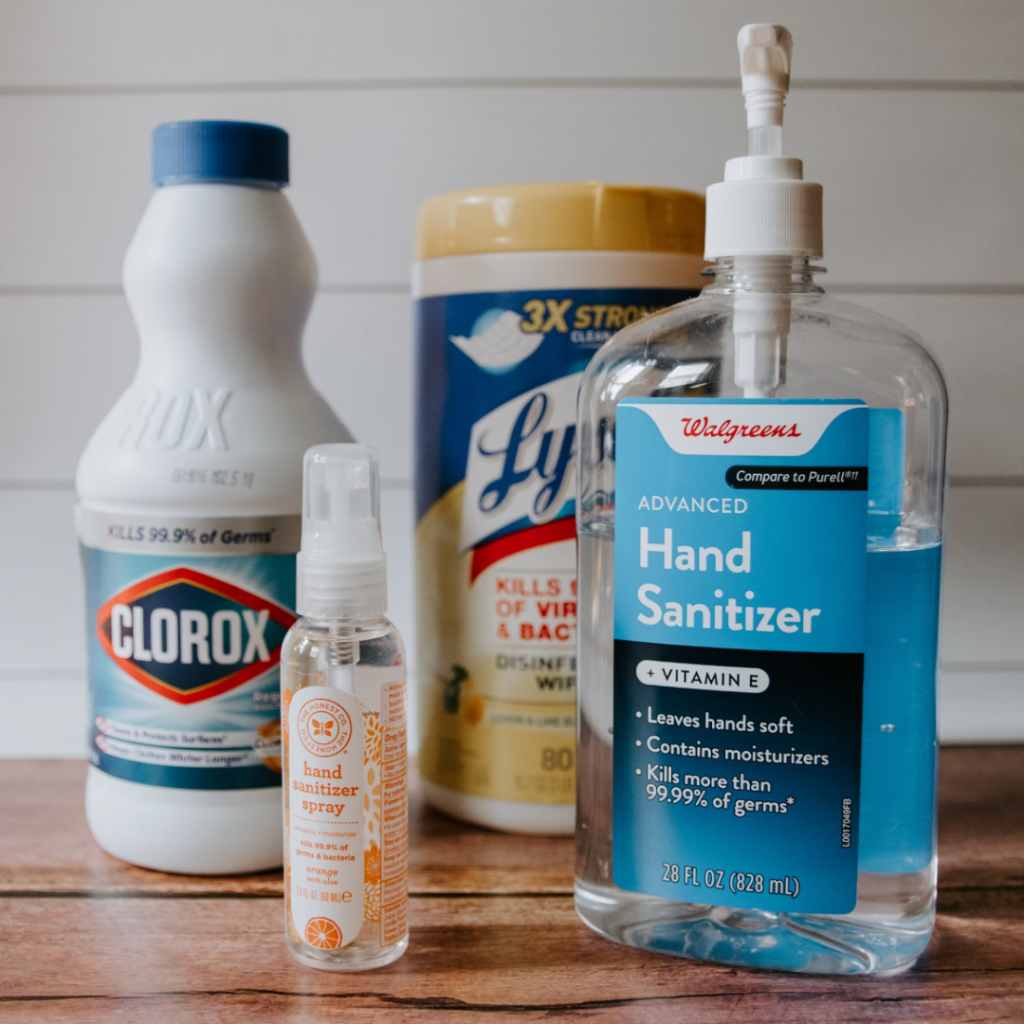
2. Supply Cleaning and Sanitation Products
Establishing cleanliness norms and encouraging individual responsibility are foundational, yet they must be supported by providing the necessary sanitation supplies. Ensuring easy access to cleaning materials in key areas underlines your commitment to a hygienic workspace.
Ensure a consistent availability of essential items like hand soap, particularly in restrooms, and monitor these supplies regularly. Position hand sanitizers throughout the space, especially near entrances and exits, and consider providing closed bins to maintain tidiness and offer masks for those who may need them.
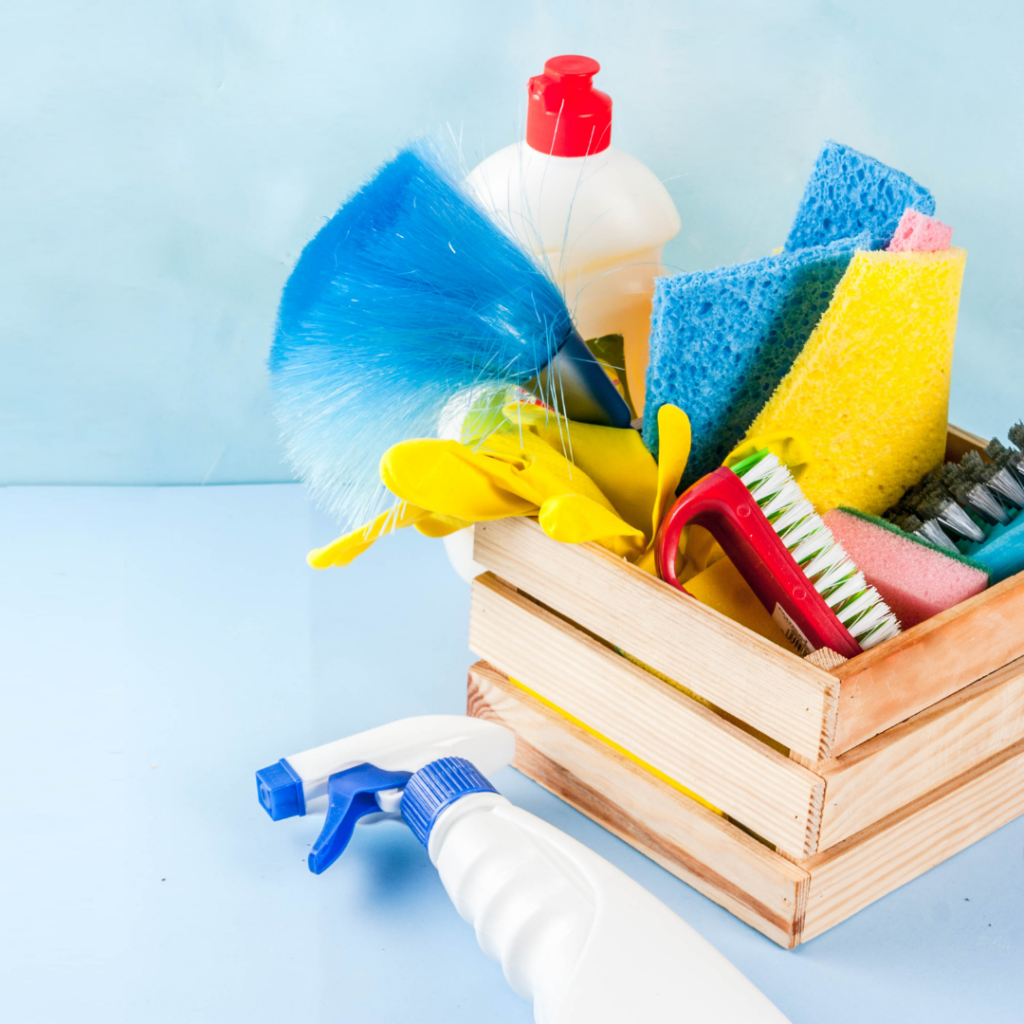
3. Regularly Disinfect High-Contact Surfaces
In the current health climate, the frequency of disinfecting workspaces must increase, though it’s important to avoid excessive use of harsh chemicals that could encourage a resistance in pathogens or degrade indoor air quality.
Striking a balance in disinfection practices, particularly in high-traffic areas, is key to maintaining a safe environment.
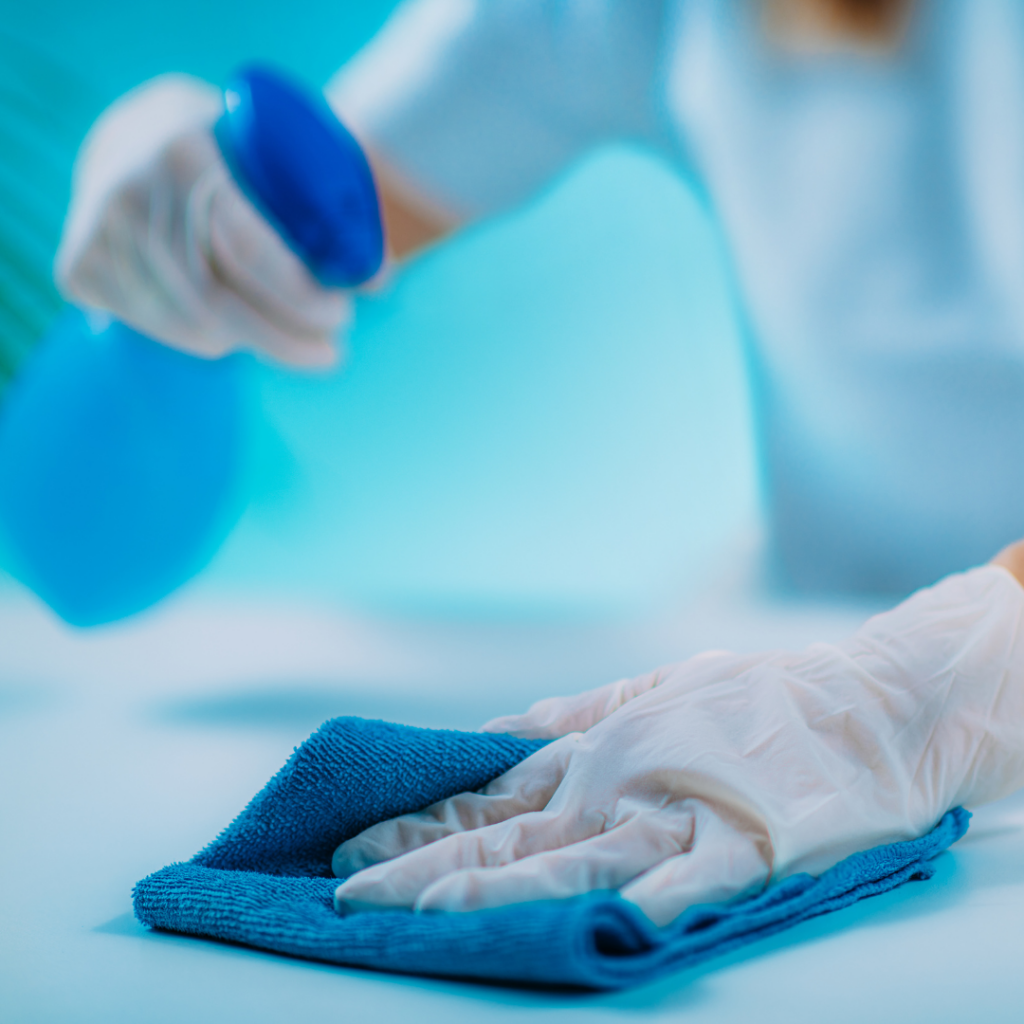
4. Clean Desktop Accessories Thoroughly
Desktop accessories, which see frequent contact, often go overlooked in cleaning routines. Regular sanitization of these items, including monitors, keyboards, mice, and even mouse pads, which can harbor bacteria, is critical. Exercise caution to avoid damaging these items while cleaning.
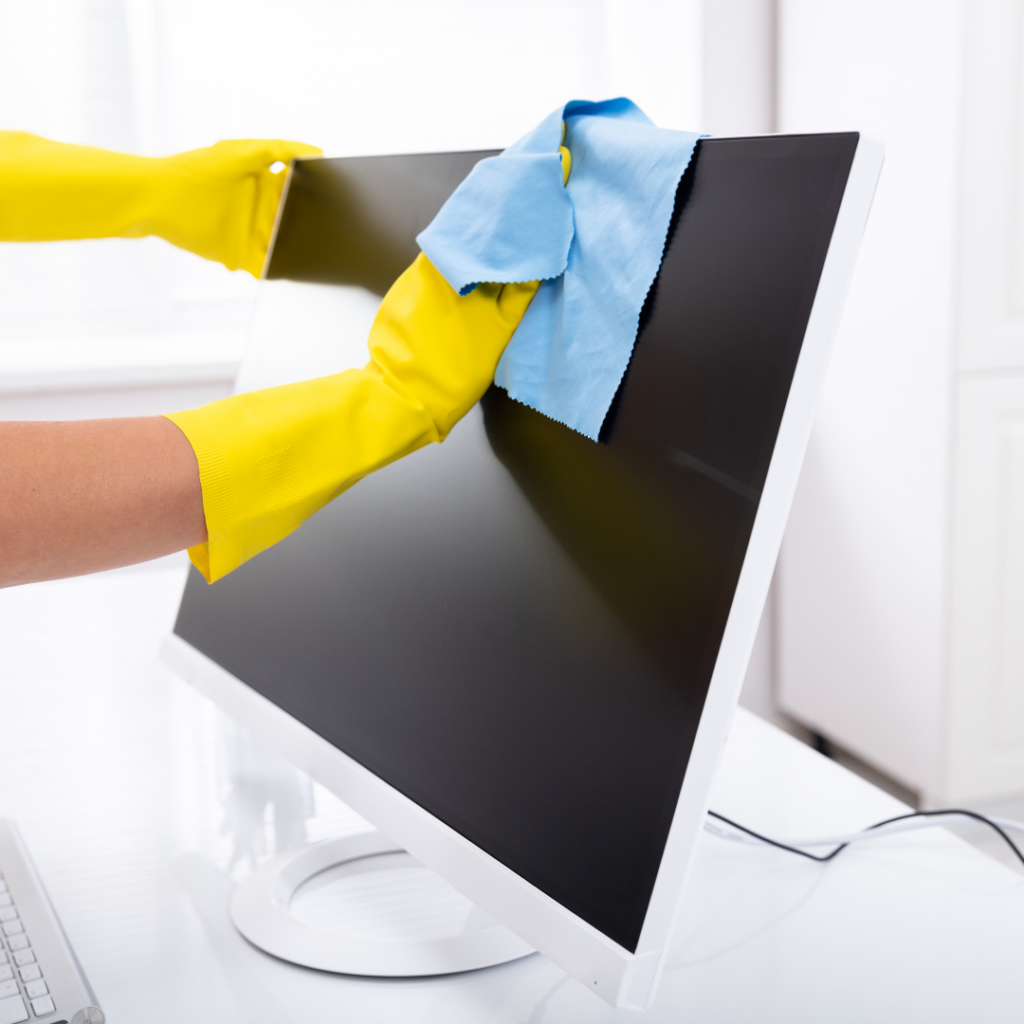
5. Centralize Trash Disposal
Opting for centralized trash collection points rather than individual desk bins can create waste management and potentially reduce overall waste production. This approach encourages mindfulness about waste generation and simplifies maintenance routines.
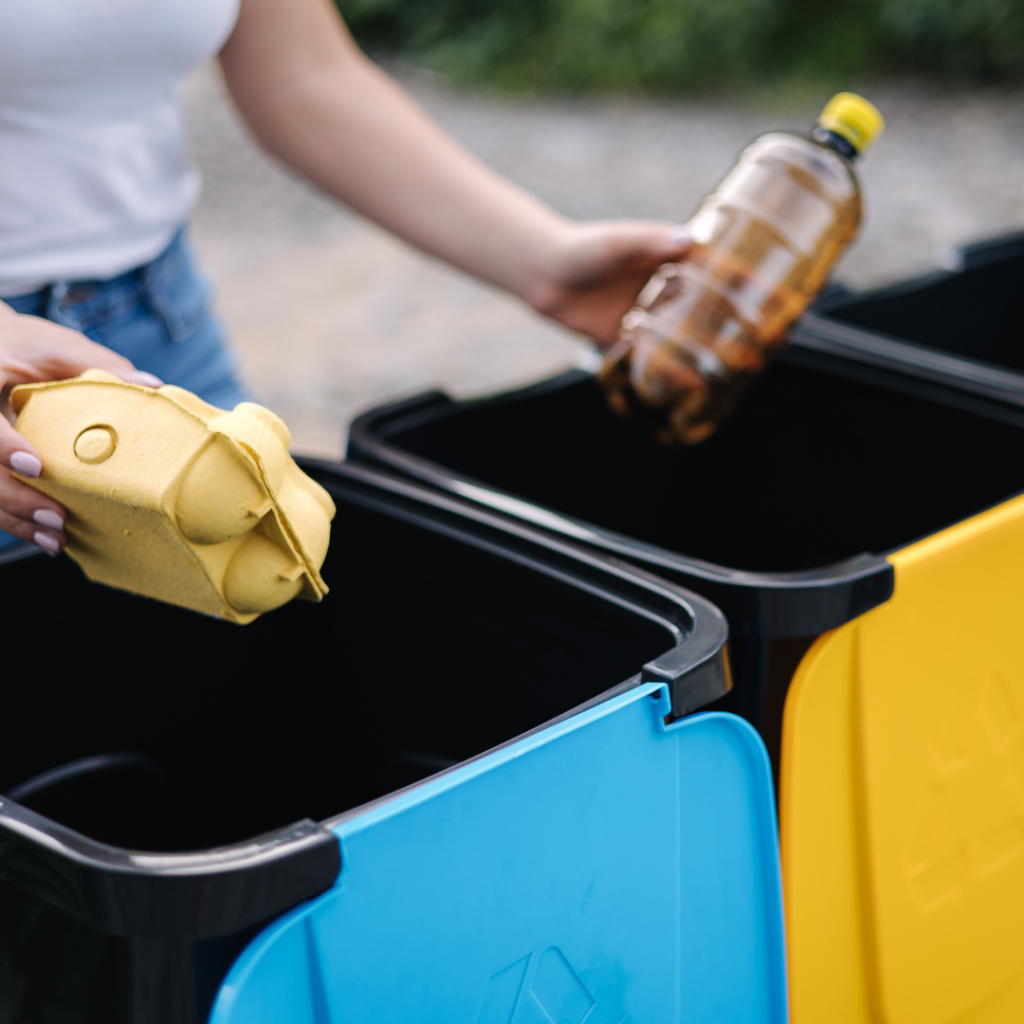
6. Maintain Cleanliness in Shared Spaces
Ensuring the cleanliness of communal areas is non-negotiable for a hygienic coworking environment. Pay special attention to frequently touched surfaces like door handles and shared office equipment, which are often overlooked yet critical to overall cleanliness.

Conclusion
Cleanliness in your coworking space is a very big part of the overall experience of your members and users. You want to be sure to do everything you can to create a clean and safe environment that your members feel comfortable coming in. Whether it means hiring professionals or focusing on your air quality, there will always be something you can do to improve the cleanliness of your coworking space.
Integration Tip:
Enhance your workspace’s technological appeal and minimize physical contact by linking your coworking management software with a smartphone-based access control system. This modern solution not only improves the user experience, it also supports hygiene efforts by reducing the need for direct contact with surfaces and individuals.

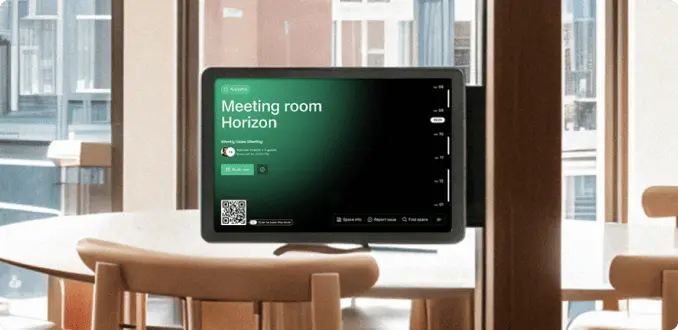





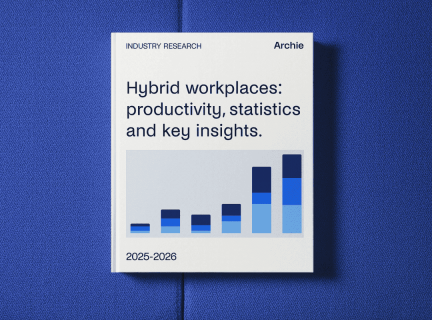


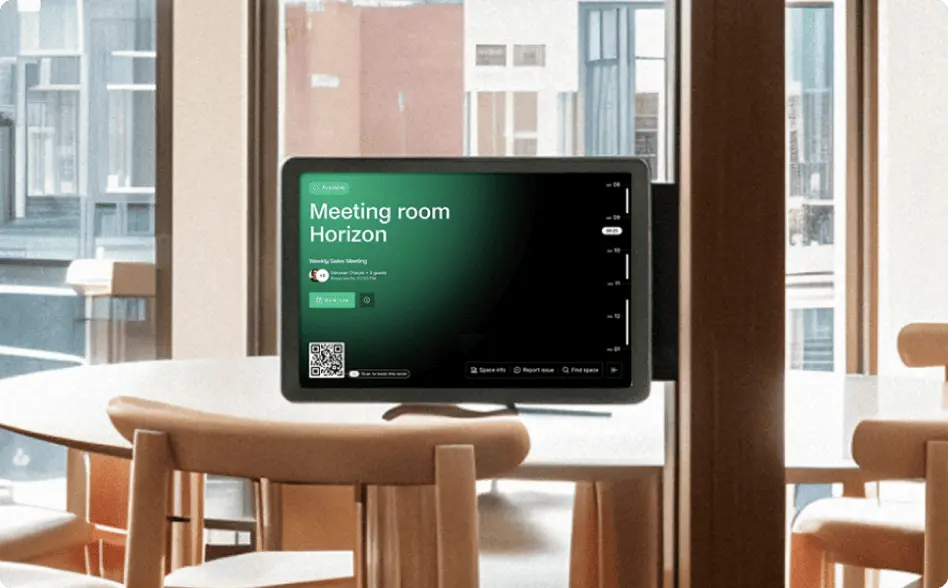
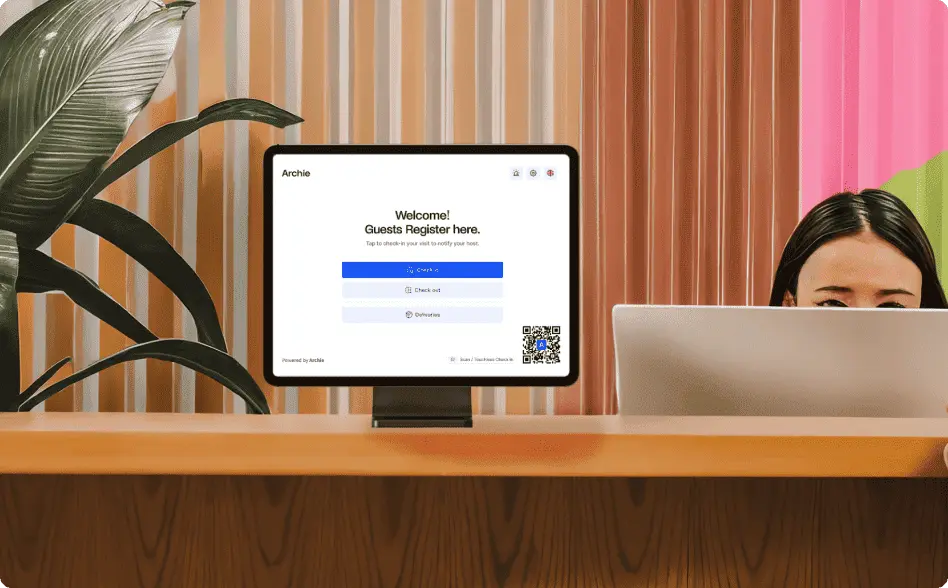



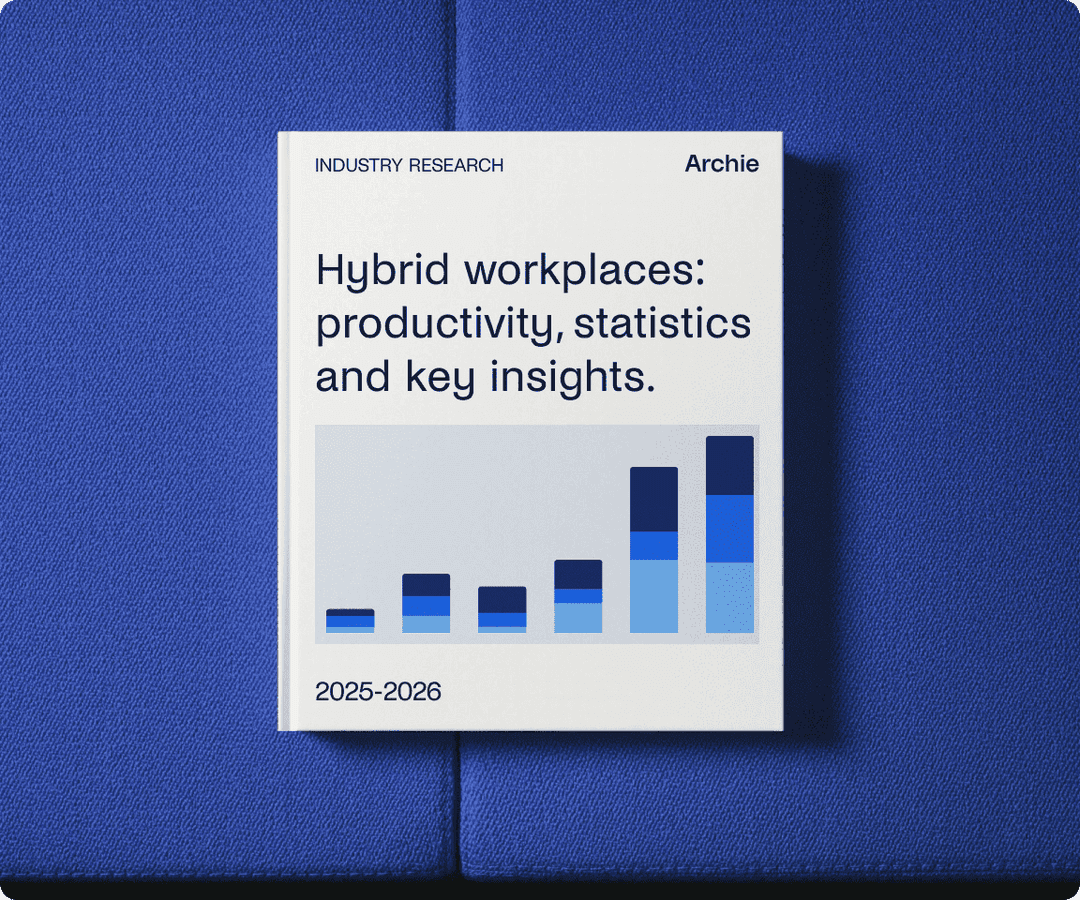




![The Latest Coworking Statistics & Industry Trends [2026] A cozy coworking space with wooden walls, warm lighting, and a large map of South America.](https://archieapp.co/blog/wp-content/uploads/2025/08/Latest-coworking-statistics-cover-image-400x400.jpg)
